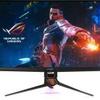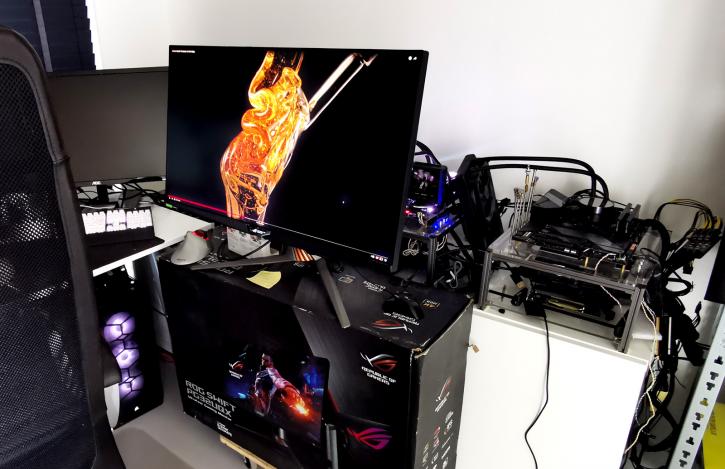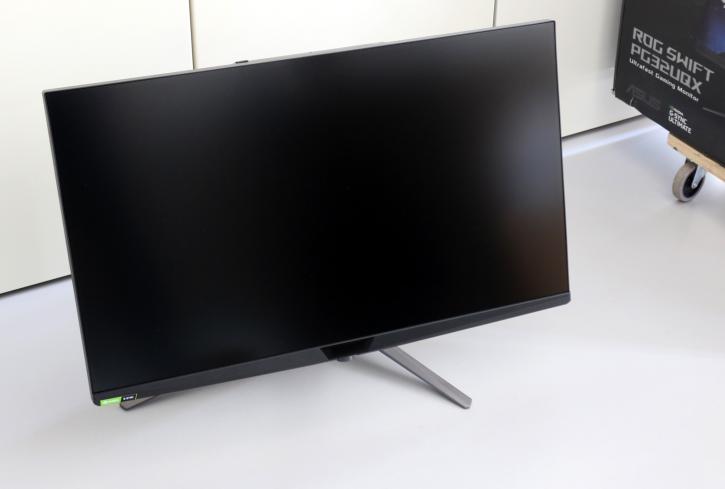Analysis
Asus ROG Swift PG32UQX Monitor Review
A 144 Hz gaming Mini LED IPS panel with G-Sync module
The ASUS ROG Swift PG32UQX is a fabulously designed monitor with a high Ultra HD resolution that is also technologically advanced in the sense that it's one of the first gaming monitors with mini LED and quantum dots. In terms of size, it is an 81 cm (32") gaming monitor with Ultra HD resolution (3840x2160pixels), which means it provides a razor-sharp display for video games, films, and other media at 138ppi density. Even in direct sunlight, the panel's maximum brightness is no less than 500 cd/m2 in SDR with peak HDR brightness topping 1400 cd/m2 and is VESA DisplayHDR 1400. In addition to having a reaction time of 4ms (GtG), the ROG Swift PG32UQX features an effective refresh rate of 144Hz, which allows for rather fluid graphics to be displayed on the screen. When used in conjunction with NVIDIA's G-Sync ULTIMATE technology, the result is a smooth, stutter-free, and artifact-free gaming experience of the highest caliber on compatible devices. The ROG Swift PG32UQX comes with an ergonomic base that allows for simple rotation.
Back in the days we had the discussion about your eyes only seeing 24 frames per second, so everybody figured a 60 Hz screen was totally fine. However it's not as easy as that really, later on, it became apparent that the human eye definitely can see the difference between 60 and 144 Hz when gaming. Small Full HD screens already achieve 360 Hz at that top end side of the spectrum. Amazing.
The AU Optronics (M320QAN02.6) based mini LED panel is paired with a G-sync module, this is not just adaptive sync. These boards are designed to eliminate stutter and tearing whilst also helping out as a scaler in these super high refresh rates. You don't see G-SYNC module-enabled monitors a lot these days, as adaptive sync is the most preferred (cheaper) option. This brings me to pricing, this monitor will sell at roughly 3500 EUR/USD which makes me want to throw up a little. But hey, this is the enthusiast category with that all-new tech, mini LED, not to confuse with micro LED.
Mini LED, as the name implies, reduces the size of the LED modules that provide illumination for LCD screens. LCD pixels cannot self-illuminated – unlike OLED pixels – and hence require a light source behind them to provide the appropriate brightness and color. Additionally, because of this additional layer of illumination, the pixels in an LCD panel can never be completely turned off.
Creating these panels is very time-consuming because each LED in the backlight has to be placed in the right place. There is also a choice of flexible substrates, which are more expensive and require a second coat to ensure that the lighting is even enough for a panel. Mini-LED panels appear to be relatively simple and therefore usually only consist of two layers. Where we're used to full-array local dimming backlight (fald) with 384 zones, the PG32UQX has 1152 zones thanks to that array of mini LEDs. In order to accomplish this, ASUS employs arrays of tiny LEDs in the panels. As a result, the PG32UQX is the world's first gaming monitor to use a tiny LED backlight. The contrast levels are much better. All that RGB and MiniLED goodness does not even make the product consume too much power either you'll hover at 59W (typical), and 0.5W (standby).


.png)

